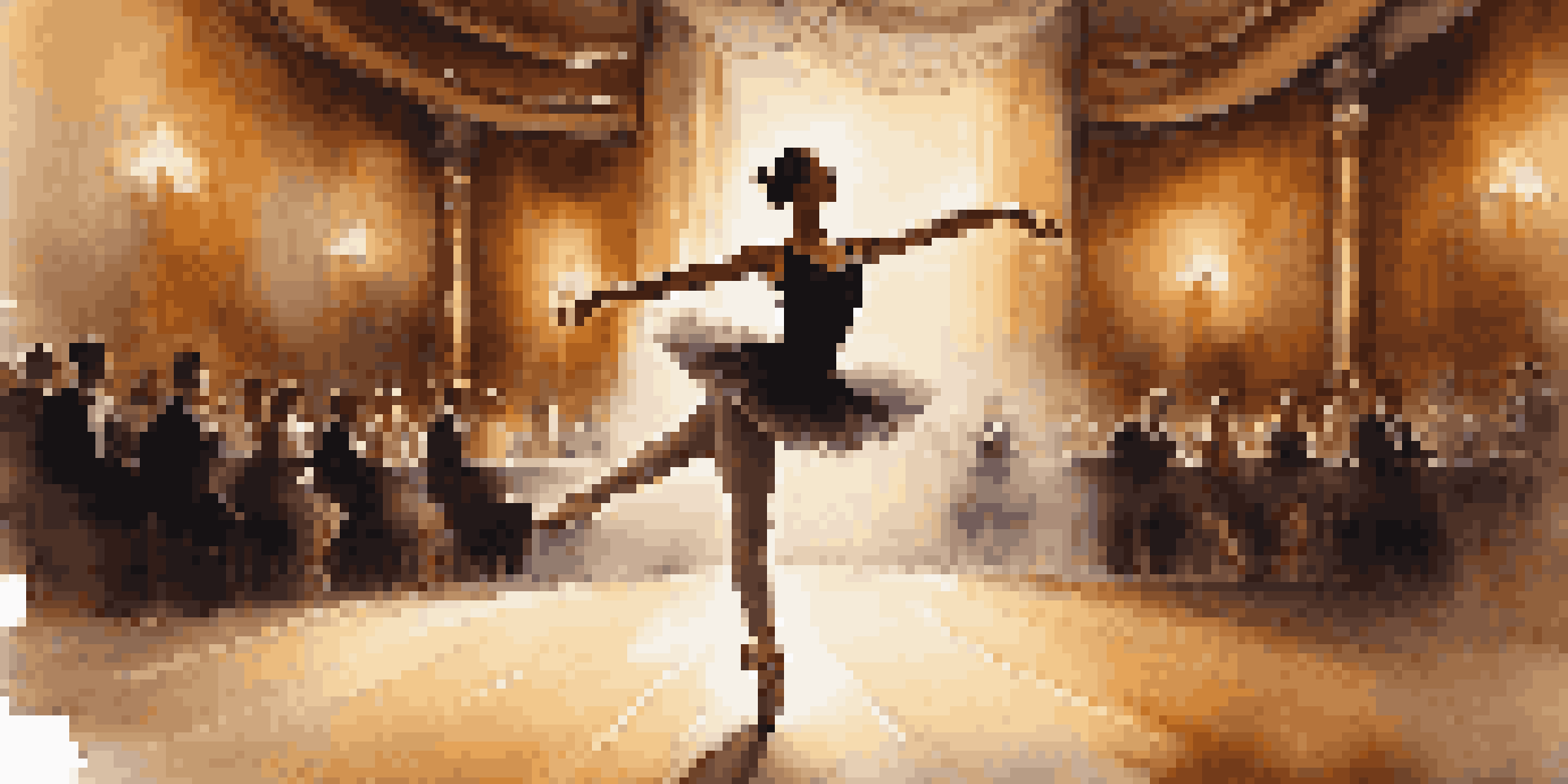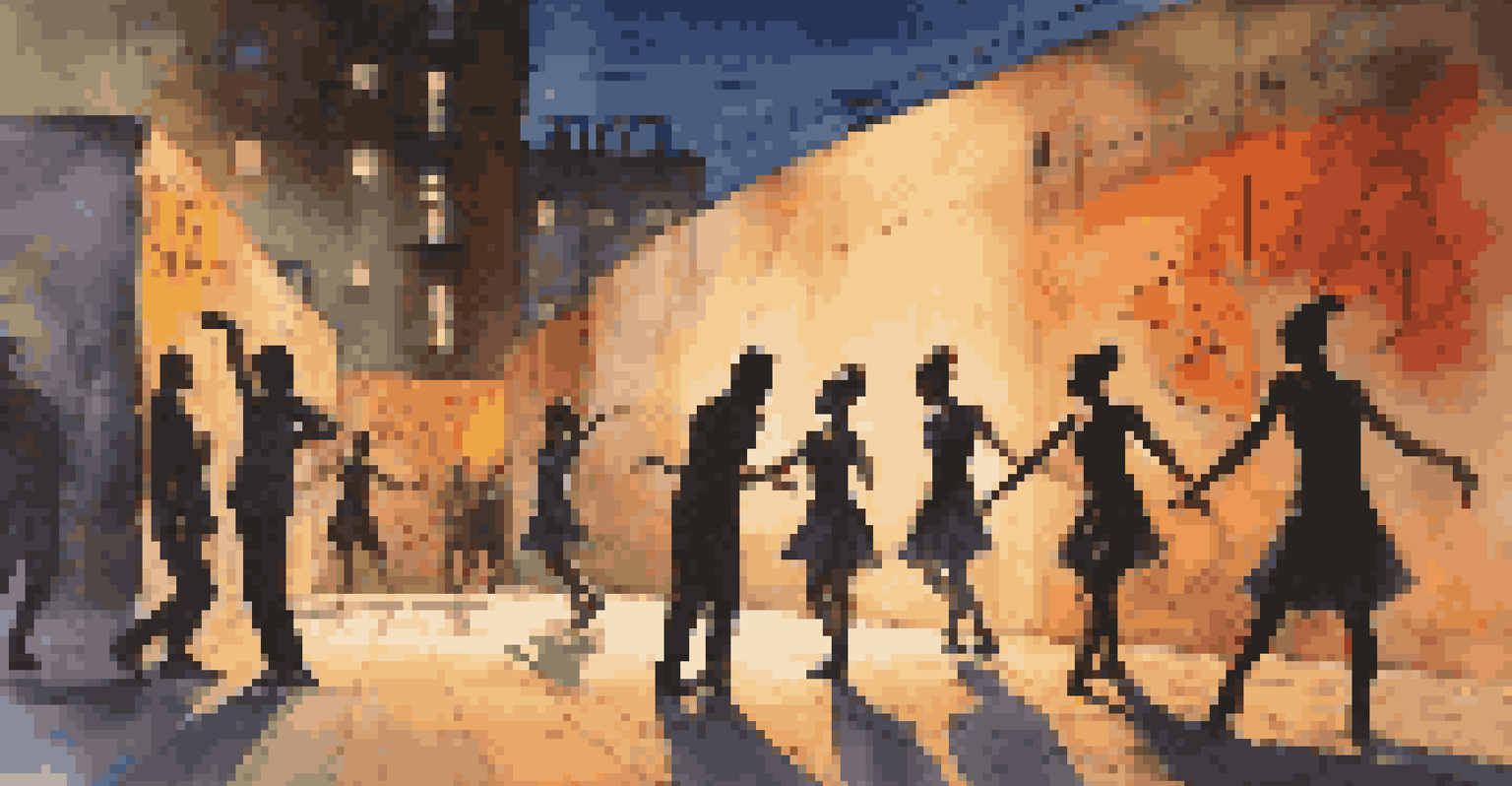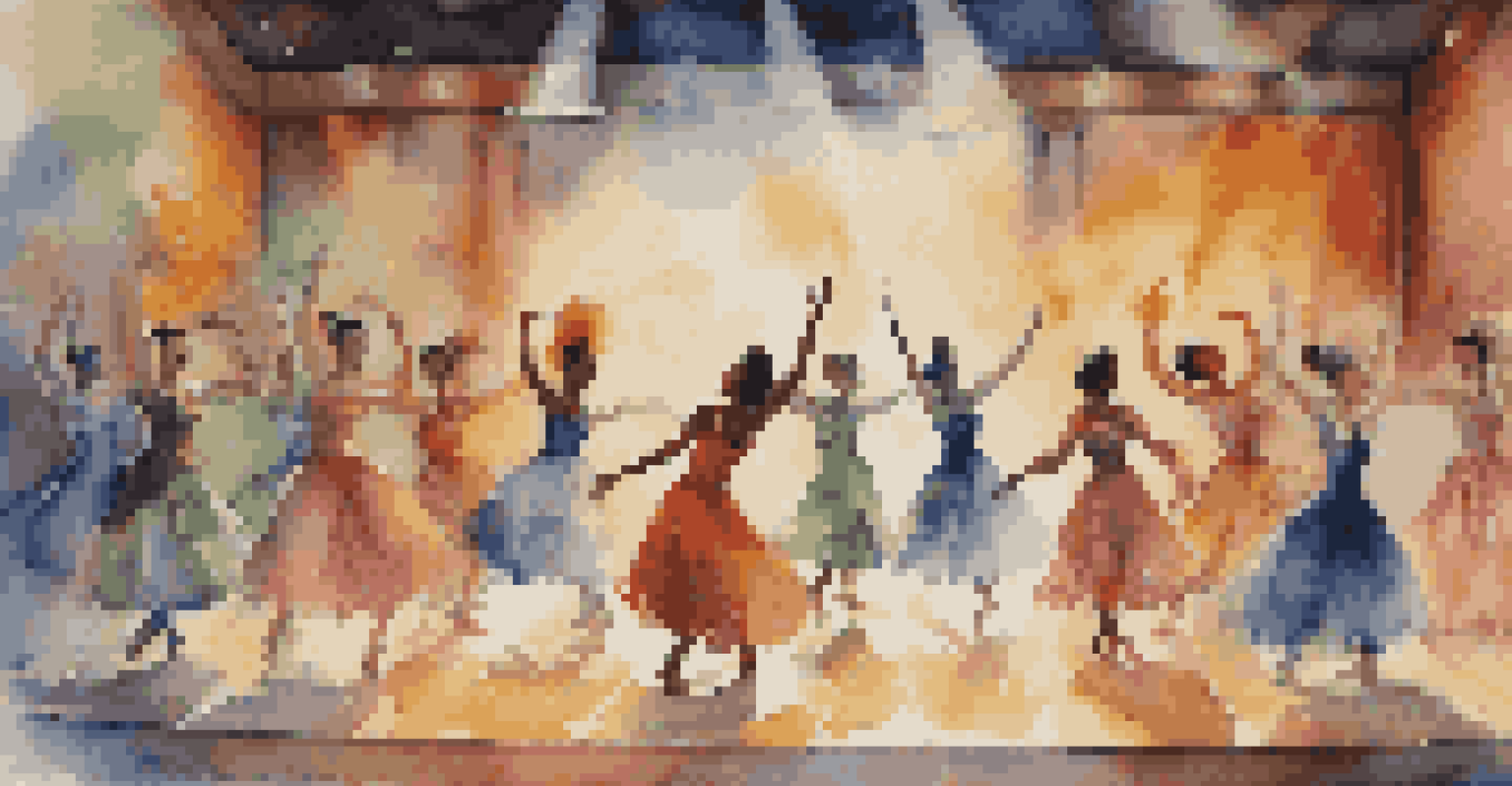Dance as Storytelling: Narrative Techniques in Performance Art

Understanding Dance as a Form of Storytelling
Dance is more than just movement; it’s a powerful medium for storytelling. Just as a novel unfolds through its characters and plot, dance can convey emotions, themes, and narratives without a single word. The body becomes an expressive tool, capable of communicating complex ideas and feelings that resonate with audiences.
Dance is the hidden language of the soul.
Consider a ballet performance that tells the tale of love and loss. Each movement, from a gentle sway to a dramatic leap, encapsulates the character's journey. This ability to convey a storyline through physicality allows dancers to connect with their audience on a deeper level, transcending language barriers.
Ultimately, dance invites viewers into a shared experience where they can interpret the story through their own lens. This unique narrative approach makes dance a compelling and impactful art form that engages both the heart and mind.
The Role of Movement in Narrative Construction
Movement is the heartbeat of dance storytelling. Each gesture, whether it’s a subtle hand movement or an explosive spin, contributes to the overall narrative. Dancers use a variety of movements to express emotions, define characters, and advance the plot, creating a rich tapestry of storytelling.

For example, a slow, flowing movement might represent calmness and serenity, while sharp, abrupt movements could indicate conflict or tension. These choices are crucial, as they help the audience understand the emotional landscape of the story being told.
Dance as a Narrative Medium
Dance conveys complex emotions and stories through movement, allowing audiences to connect deeply without words.
By focusing on the nuances of movement, choreographers can craft intricate narratives that invite viewers to feel, reflect, and engage. This connection between movement and storytelling is what makes dance a unique and powerful form of expression.
Embodying Characters Through Dance
Character embodiment is a vital aspect of storytelling in dance. Dancers not only perform movements but also bring characters to life through their physicality and expressiveness. This transformation allows the audience to grasp the motivations and emotions of each character.
The dance is a poem of which each movement is a word.
A dancer might embody a mythical creature, portraying its grace and ferocity through specific movements and facial expressions. This helps to evoke empathy and understanding from the audience, who can see the world through the character’s perspective.
The ability to inhabit a role fully can make the narrative more relatable and impactful. When dancers skillfully embody their characters, they create moments of connection that resonate long after the performance ends.
Music and Rhythm: Enhancing Dance Narratives
Music plays a crucial role in amplifying the narrative in dance. The rhythm, tempo, and mood of the music can influence how a story is told and experienced. Just like a soundtrack in a movie, the right music can evoke emotions and set the tone for the performance.
For instance, a joyous dance set to an upbeat melody can convey celebration, while a somber piece accompanied by slow, melancholic music can express sorrow or reflection. The synergy between movement and music creates a holistic experience for the audience, where both elements enhance each other.
Role of Music in Dance Storytelling
The synergy between music and movement enhances the narrative, evoking emotions and setting the performance's tone.
This interplay of sound and movement forms a deeper narrative, as the audience is not only watching the dance but also feeling the music. Together, they weave a richer story that captures the imagination.
Use of Space and Setting in Dance Storytelling
The use of space and setting is another essential narrative technique in dance. The stage becomes a canvas where stories unfold, and how dancers utilize space can significantly impact the narrative flow. Movements across the stage can signify journeys, relationships, or conflicts.
For example, a dancer moving in isolation may represent loneliness, while another moving in close proximity to others could signify connection and community. This spatial relationship adds layers to the story being told, inviting the audience to explore the dynamics between characters.
Moreover, the choreography can be designed to interact with the setting, such as dancers using props or scenery to enhance the narrative. This thoughtful integration of space enriches the storytelling experience and allows for a more immersive performance.
Symbolism and Themes in Dance Narratives
Symbolism plays a pivotal role in conveying deeper meanings within dance narratives. Dancers often incorporate symbolic gestures, movements, or props that represent larger themes or ideas. This adds an extra dimension to the storytelling, inviting audiences to interpret the performance on multiple levels.
For instance, a dancer might use a flowing fabric to symbolize the passage of time or a cyclical journey. Such elements encourage viewers to engage critically with the performance and extract their own interpretations.
Audience Interpretation Matters
Each viewer's personal experiences shape their interpretation of a dance narrative, creating a unique and shared connection.
Themes like love, conflict, and transformation can be explored through these symbolic elements, making the narrative resonate more profoundly. This layer of storytelling allows dance to address universal human experiences in a unique and impactful way.
The Impact of Audience Interpretation in Dance
One of the most fascinating aspects of dance storytelling is the role of audience interpretation. Each viewer brings their own experiences and emotions to the performance, influencing how they perceive the narrative. This subjective experience allows for a rich tapestry of interpretations.
For example, a dance piece exploring themes of loss might evoke feelings of grief in one viewer while inspiring hope in another. This diversity of interpretation highlights the power of dance as a form of communication that transcends cultural and linguistic boundaries.

Ultimately, the audience’s engagement with the narrative is what makes dance storytelling so powerful. It creates a shared moment of connection, where the dancer’s story becomes intertwined with the viewer’s personal experience.